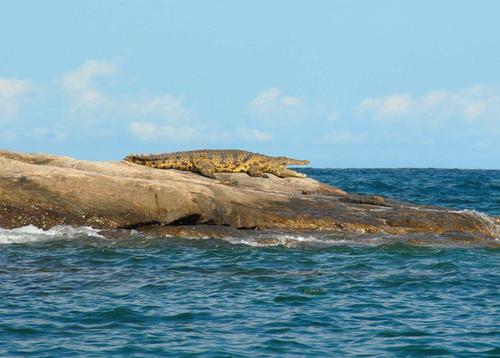New species [in Africa] for a Worcestershire recorder [Will Watson]
Harry Green
For the naturalists of Worcestershire Will Watson is a familiar face. He is a freshwater ecologist who used to live in Worcester and now lives near Bromyard. He often contributes records to the Worcestershire Biological Records Centre and adds an aquatic dimension to our special recording days. He has recently received an unexpected honour, probably unique in the annals of our local naturalists. In January 2011 we were delighted to receive the following email (Ed).
An email from Will: “Great news. I am able to confirm that I did discover a new species of water beetle on the Manda Wilderness Reserve in Mozambique. The beetle was found during both of my trips in 2008 and 2009. It has been named Haliplus watsoni which is a little bit embarrassing but a great honour. It has all been written up in a Dutch scientific paper Netherlande Entologische Vereniging: http://www.nev.nl/tve/html African Haliplidae (Coleoptera) by Bernhard J. Van Vondel. Volume 153 239-314 December 2010.
PRESS RELEASE:
Herefordshire man discovers new species
Over the course of two scientific expeditions to the subtropical rainforests of Mozambique, Will Watson, Wildlife Consultant from Docklow discovered a species of water beetle new to science. The 2.7 mm long diving beetle has been named Haliplus watsoni. Will says:
“I am absolutely chuffed to have found a new species of beetle and honoured to have it named after me. This is a particularly rare accolade as it is not normal convention to name species after the finder. The expedition had its moments of risk. I was initially concerned by that I might be confronted by crocodiles and hippos. However, in the end I was infected by the microscopic parasite which causes bilharzia. But this makes all the pain and effort worthwhile”
The water beetle was discovered in 2008 in a floodplain pool on the Manda Wilderness Community Game Reserve which is managed in association with the local community by Nkwichi Lodge. The reserve is in northern Mozambique in the Great Rift Valley and borders Lake Niassa (also known as Lake Malawi) which is 365 miles long and 55 miles wide and is the 9th largest lake in the world. Further water beetle specimens were collected on a second trip to Mozambique in 2009. The reserve covers 130 000 hectares; just over half the size of Herefordshire but with a fraction of its population. It is an unspoilt wilderness with Brachystegia forest, savannah, swamps, streams, mountains and miles of sandy beaches with crystal clear water.
It took a year and half for the beetle’s identity to be confirmed by international water beetle expert Bernhard Van Vondel and others in the scientific community. Its discovery comes at a time when the Mozambique Government and the World Wildlife Fund are in the process of establishing the Lake Niassa Reserve and the Manda Wilderness Community are developing eco-tourism on their reserve. This find indicates how valuable the surrounding freshwater habitats are for biodiversity and should help inform and direct conservation efforts.
Images
Fig. 1. Haliplus watsoni. Picture ©Will Watson
Fig. 2. The floodplain pool in northern Mozambique where the beetle was found. Picture©Will Watson
Fig. 3. Nile Crocodile photographed on Lake Niassa in 2008. Picture ©Will Watson
Fig. 4. Will with his pond net in a lakeside pool. Picture ©Will Watson



